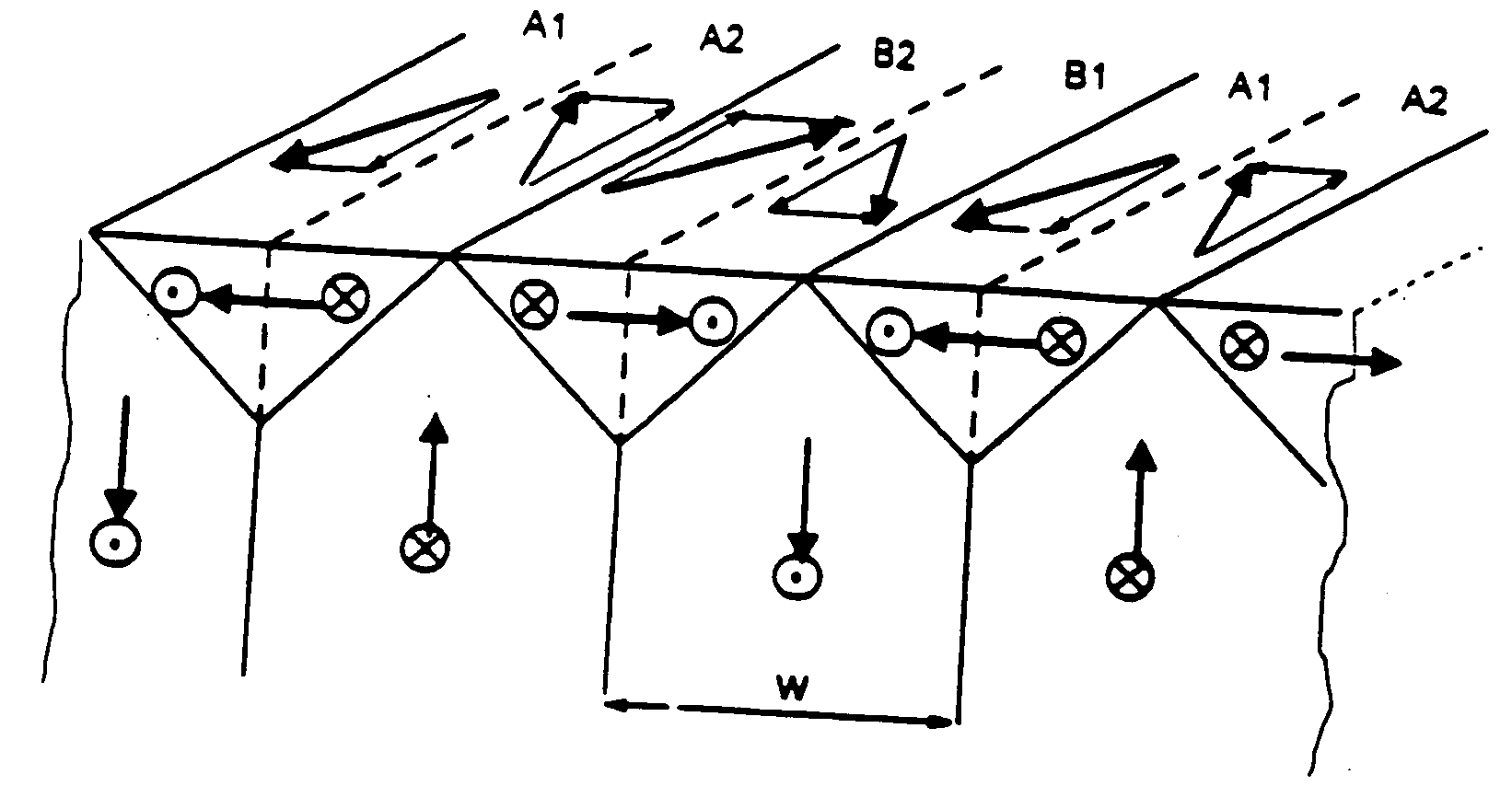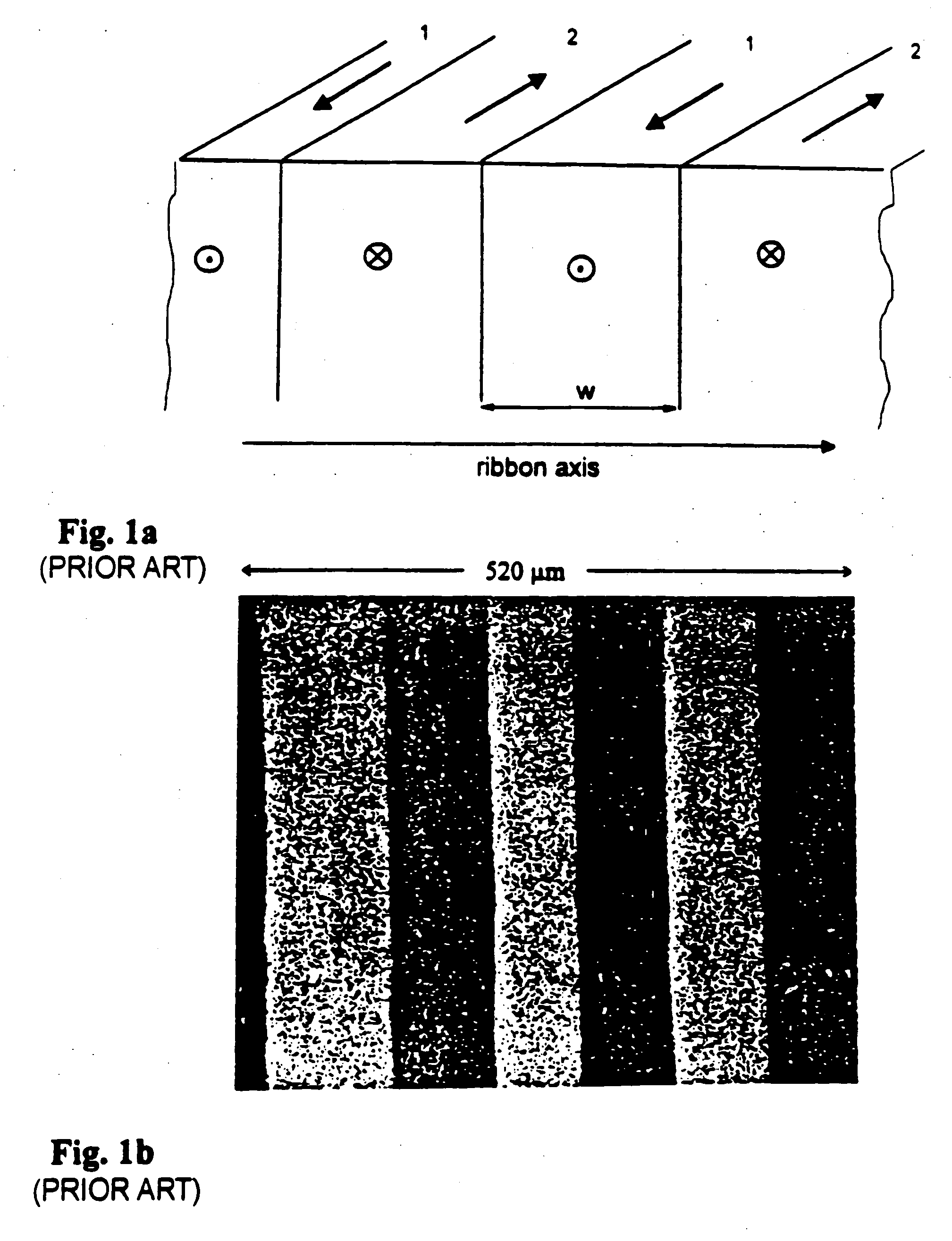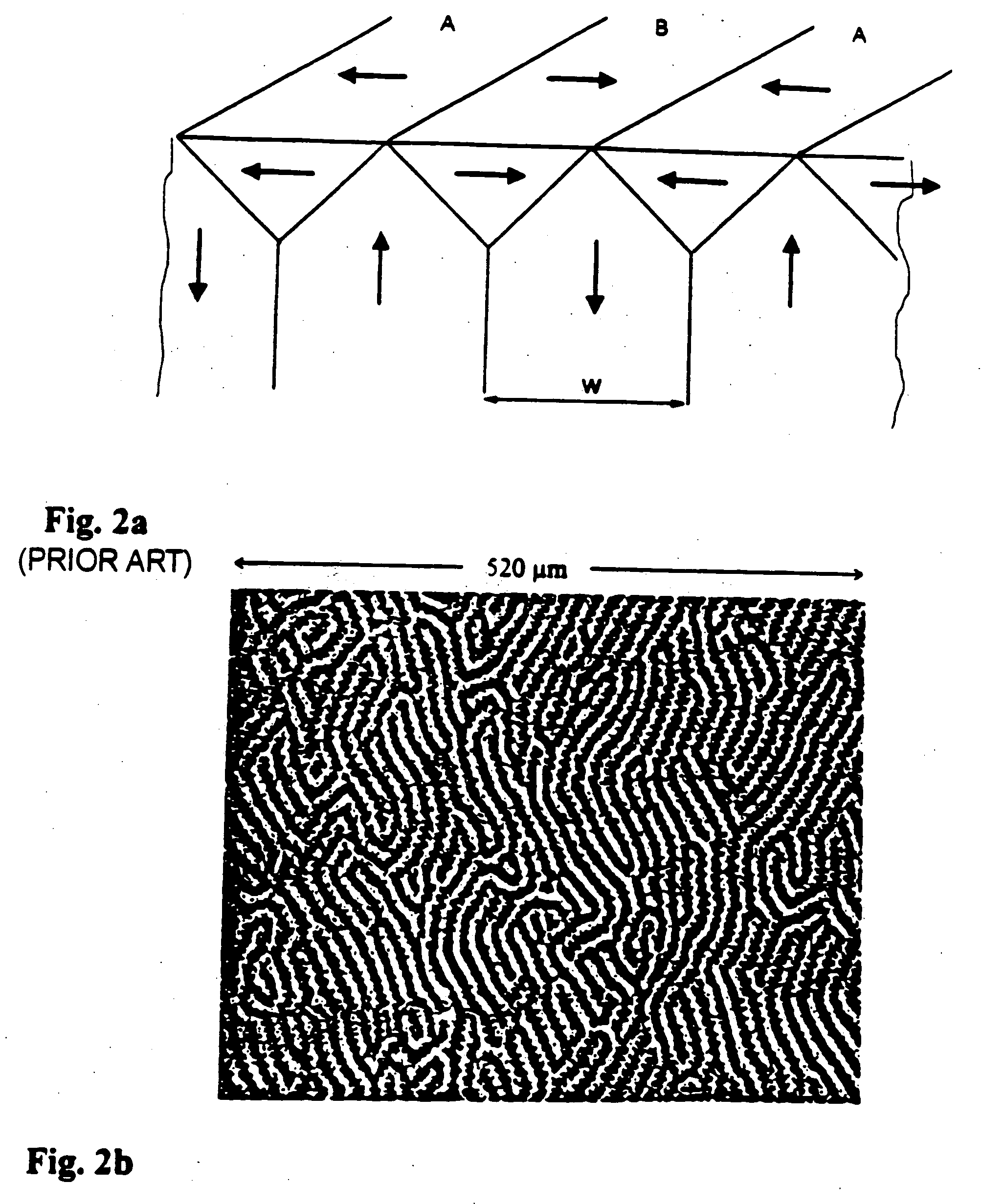Method of annealing amorphous ribbons and marker for electronic article surveillance
a technology of amorphous ribbons and markers, applied in the field of magnetic amorphous alloys, can solve the problems of enhanced ac losses, interference with harmonic systems, and unsuitability of pulse-field magnetomechanical eas systems
- Summary
- Abstract
- Description
- Claims
- Application Information
AI Technical Summary
Benefits of technology
Problems solved by technology
Method used
Image
Examples
Embodiment Construction
Alloy Preparation
[0067] Amorphous metal alloys within the Fe—Co—Ni—Si—B system were prepared by rapidly quenching from the melt as thin ribbons typically 25 μm thick. Table I lists typical examples of the investigated compositions and their basic material parameters. All casts ere prepared from ingots of at least 3 kg using commercially available raw materials. The ribbons used for the experiments were 6 mm wide and were either directly cast to their final width or slit from wider ribbons. The ribbons were strong, hard and ductile and had a shiny top surface and a somewhat less shiny bottom surface.
TABLE IExamples of the investigated alloy compositions and their magneticproperties. Js is the saturation magnetization, λs the saturationmagnetostriction constant and Tc is the Curie temperature. The Curietemperature of alloys 8 and 9 is higher than crystallization temperature ofthese samples (=440° C.) and, thus, could not be measured.Alloyatomic constituents (at %)magnetic properti...
PUM
| Property | Measurement | Unit |
|---|---|---|
| magnetization | aaaaa | aaaaa |
| width | aaaaa | aaaaa |
| domain width | aaaaa | aaaaa |
Abstract
Description
Claims
Application Information
 Login to View More
Login to View More - R&D
- Intellectual Property
- Life Sciences
- Materials
- Tech Scout
- Unparalleled Data Quality
- Higher Quality Content
- 60% Fewer Hallucinations
Browse by: Latest US Patents, China's latest patents, Technical Efficacy Thesaurus, Application Domain, Technology Topic, Popular Technical Reports.
© 2025 PatSnap. All rights reserved.Legal|Privacy policy|Modern Slavery Act Transparency Statement|Sitemap|About US| Contact US: help@patsnap.com



